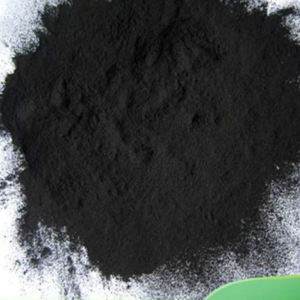
 Anhui, China
Anhui, China
 Anhui, China
Anhui, China
Send Email




Activated Carbon for decolorization of sugar solution / CAS 7440-44-0
OVERVIEW
Uses
Packaging
25 KG/Woven Bag
Lead Time
14-30 days
REQUEST A QUOTATION
SubmitDESCRIPTION
Activated Carbon for decolorization of sugar solution
CAS:64365-11-3
Introduction:
Activated carbon is a kind of carbon material with great specific surface area and strong adsorption and decolorization ability. In the 19th century, people used it to decolorize, taste and purify sugar, wine and water. Bone charcoal has been used for water filtration for more than 100 years. Activated carbon was used to make gas masks during the first World War. By the 1990s, it was widely used in sewage treatment, concentration and recovery of organic solvents, air purification and other environmental protection, gold extraction and other fields.
Structural properties:
Activated carbon belongs to amorphous carbon. Although they do not have the crystalline structure of diamond and graphite, it has been found from X-ray diffraction that their structure contains basic microcrystals. The basic microcrystalline is composed of several layers of hexagonal network structure of carbon atoms, which are irregularly overlapped with each other. In addition to the basic microcrystals, there are also single net planes that do not form parallel layers and irregular carbon in activated carbon, such as carbon with fat chain structure, carbon attached to the edge of aromatic structure and so on. In addition to carbon, the element composition of activated carbon also includes hydrogen and oxygen in the form of chemical combination and many elements in the form of ash. The surface of activated carbon also has acidic and alkaline surface oxides and functional groups.
The most important property of activated carbon is adsorption. Activated carbon is a porous material, which contains a large number of pores, including micropores with a radius of less than 20 angstroms, transition pores with a radius of 20 ~ 1000 angstroms and macropores with a radius of 1000 ~ 20000 angstroms. Due to the different pore sizes and different surface oxides and functional groups of various activated carbons, their adsorption properties are different and have the ability of selective adsorption. For example, activated carbon for sugar has more transition pores and better adsorption capacity for sugar colored impurities of macromolecules, while activated carbon with more micropores is suitable for gas phase adsorption and removal of small molecular impurities. Main quality indexes of powdered activated carbon: the decolorizing power of 0.15% methylene blue is 8 ~ 14ml / 0.1g activated carbon, the decolorizing power of caramel color of method a or B is 90 ~ 100%, the total iron content is not more than 0.05 ~ 0.10%, the chloride content is not more than 0.2 ~ 0.25%, the pH value is 3 ~ 9, the burning residue is not more than 3 ~ 8%, and the drying loss is not more than 10%.
Main indicators:
The main indicators of activated carbon include: particle size, strength, moisture, water capacity, bulk density, particle density, true density, specific surface area, ash content and other indicators characterizing physical properties, and benzene adsorption rate, carbon tetrachloride activity and other indicators characterizing adsorption properties.
Application scope:
Activated carbon is widely used in almost all fields of the national economy. In gas phase adsorption, it is used to remove harmful gases from waste gas, air purification in environmental protection, solvent recovery, smoke exhaust and desulfurization, atomic radiation protection and removal of nuclear fission radioactive substances and radioactive iodine, krypton, xenon, etc. escaping from atomic energy facilities. It is used to purify food, fruit juice, refined sugar, malt and other edible products, such as refined sugar, fruit juice, agar and other additives; Purification and refining of various drugs and injections in the pharmaceutical industry; Refining, purification and recovery of various chemicals and industrial oils in the chemical industry; Wastewater treatment and water treatment; Synthetic fiber industry, petroleum refining, and used as catalyst and catalyst carrier. With the development of science and technology, the varieties and adsorption capacity of activated carbon will be further increased and improved. For example, the recently developed activated carbon with high specific surface area can reach 3000m2 / g, and the application range of activated carbon will be wider.
Typical Properties
GET SAMPLE
Submit- Overview
- Descriptions
- Sample































